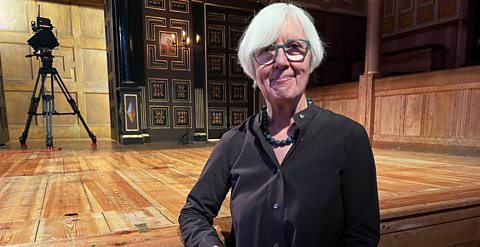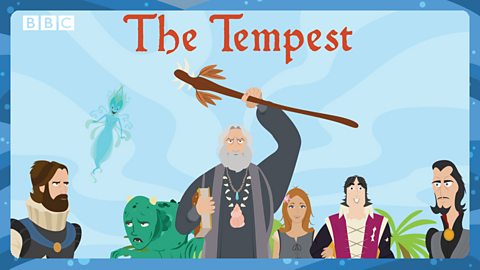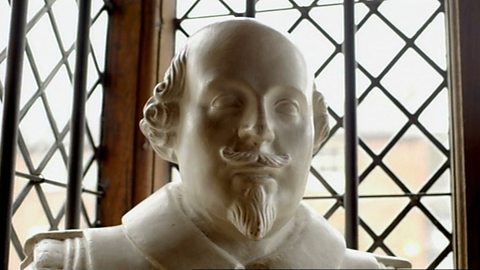Born: 1954
Nationality: British
Period: 21st Century
Genre: Programme music
Theme: Nature and water
Key musical element:
- Timbre

About Judith Weir
- Judith was born into a Scottish family and grew up in London.
- She has written music which draws inspiration from Scottish folk tales as well as older stories from Medieval times.
- Judith Weir held the prestigious position of Master of the King’s Music between 2014 and 2024, a post created in 1626 by King Charles I. This meant that for 10 years Judith was heavily involved in the music for Royal events such as weddings, jubilees and coronations.
- Judith has composed for lots of combinations of instruments and voices, and is perhaps best known for her music for opera and theatre.
About the music
- Magic is a movement of a larger work called Storm based on Shakespeare's play The Tempest.
- Judith Weir describes Storm as "the soundtrack" of the play.
- The music tells the story of The Tempest's natural environment: sea, wind, waves, air, and also magic and the spirit world.
- It's written for a small ensemble of 9 players together with female voices and a children’s chorus.
- The instruments have been chosen carefully for the sounds they make, depicting elements of a storm or the aftereffects of a storm.
Listen out for:
- Percussion made of wood or metal. Both wooden and metal objects could be washed up on a beach following a storm.
- Wooden sounds made by: guiro, vibraslap (which creates a whirring sound and is made of both wood and metal), maracas.
- Metalic sounds made by: whistle, vibraphone, cymbal, tambourine (which has a wooden ring is covered in calfskin and has metal jingles) and a thunder sheet.
- Flutes and piccolos chosen especially by the composer because of their association with air and wind which links with the sounds of a storm.
- The choir of female voices singing words from The Tempest.
- The children's voices singing just one word - what word can you hear them sing?
- There is one more instrument sound that you might expect to find on a beach but maybe not in a composition – stones!
Watch the films
Kiell Smith-Bynoe explores Judith Weir's magical sounds and inspiration of her piece Storm which she wrote in response to The Tempest by William Shakespeare
Kiell:
It sounds like it’s almost time for me to go onstage.
You’d better go and take your seat!
_Ye elves of hills, brooks, standing lakes and groves,
And ye that on the sands with printless foot
Do chase the ebbing Neptune and do fly him
When he comes back; you demi-puppets that
By moonshine do the green sour ringlets make,
Whereof the ewe not bites; and you whose pastime
Is to make midnight mushrooms, that rejoice
To hear the solemn curfew… I have bedimmed
The noontide sun… graves at my command
Have waked their sleepers, opened, and let them forth._
Those poetic words were written by William Shakespeare hundreds of years ago for his play, The Tempest. His plays were, and still are, performed here at The Globe in London, and all over the world.
The Tempest inspired composer Judith Weir to write this music, called Storm.
A tempest is a fierce storm, and the play begins with one created by a powerful wizard.
The main characters are shipwrecked on a mysterious island full of magical spirits and monsters. On the island the characters find love, meet long lost family and, as Judith Weir says, “through the exercise of mercy, their quarrels are healed”.
Judith, what was it about The Tempest that inspired you to write Storm?
Judith:
The Tempest is a play by Shakespeare, and it has so many words in it about music. It seems like Shakespeare really wanted to hear music all through the play.
I don’t have any actors, but I could get some singers and some instruments so I thought that I could make own little version of The Tempest.
Kiell:
So, talk to me about the instruments that you use for this piece.
Judith:
One day I was walking around, I just saw outside a couple of old oil drums somebody had left in the street. Needless to say, being a composer, I went up and hit them to see what kind of sound they made, and they were great, they were very echoey. So, that made me start thinking what kind of instruments, what kind of stuff would be washed up on a beach like we have got in The Tempest, which is set on an island.
And we’ve got instruments like, it’s called a guiro - it’s in fact a South American instrument – but it’s like a dried-up husk of a, say a coco pod, or something like that – makes great sounds.
Kiell:
This movement is called Magic. Magic is an important theme for The Tempest, isn’t it?
Judith:
Magic is a huge theme in The Tempest because the main character, thjs man called Prospero, he was a Duke, he was the Duke of Milan but he also, his biggest interest was magic, and he spent apparently years and years studying it. Now he lives on the island, he uses magic to his advantage.
Prospero’s words say a lot about the strange creatures that live on the island. For instance, he says something about at midnight all sorts of mushrooms appear, he says there are elves, kind of fairies and goblins. We don’t know exactly what they’re like, but I imagine them being sometimes quite terrifying, scary creatures. So, I give a lot of work to the high piccolos because I think that gives some description of what the kind of sounds these strange creatures would make.
But also, I think magic is maybe something very beautiful. At times, he casts these magic spells and maybe the island is bathed in a special light. As if you were a painter, you could use every single colour in the world.
Kiell:
Judith Weir creates a magical world through music and brings every element of a play to life - without actors.
What kind of world would you create? And how would you make it sound magical?
Gwyliwch aelodau o Gerddorfa Cyngerdd y BBC, BBC Singers a Grŵp Cerddoriaeth Plant Finchley’n perfformio Magic o Storm gan Judith Weir, a’u harwain gan Ellie Slorach
Classroom resources
Lesson plan (KS2/2nd level/Progression Step 3)
Download the lesson plan for four weeks of learning and activities for Magic from Storm (PDF)

Powerpoint slides (KS2/2nd Level/Progression Step 3)
Download the Powerpoint slides for four weeks of learning and activities for Magic from Storm (PPT)

Listen to Magic
Listen to members of the BBC Concert Orchestra, BBC Singers and Finchley Children's Music Group perform Magic from Storm (mp3)

KS3 / Third and Fourth Level, S1-3 Independent Lesson Worksheet
Download this worksheet for secondary level cover lesson activity to be completed alongside the intro and performance films - Storm - Magic (PDF)

Upload and showcase your creative responses
Upload your creative responses to the BBC Ten Pieces Showcase

Arrangements
Download the piano reduction here (pdf)
These arrangements of Judith Weir's Magic (from Storm) by Sarah Freestone are for 3-part voices and small ensemble. The different ability levels are interchangeable but if using just the Grade 5 arrangement, omitting the bass part would make it really authentic to the original score.
Open score
Arranger Ellen O’Brien has also created fantastic open score arrangements of Laura Shigihara's Grasswalk for open ensembles of mixed abilities and user needs.
Open score - Magic from Storm by Judith Weir. document
Download the score, parts and associated files (.zip)

Arrangements for open ensembles
Find arrangements of two of the Ten Pieces for open ensembles, including various adaptive instruments

Explore The Tempest and Shakespeare with BBC Teach
KS2 English - The Tempest
Watch Shakespeare's play The Tempest told in 8 video clips and download the resources pack.

Put on your own version of The Tempest with songs
Use these resources to put on a musical performance based on Shakespeare’s play

Shakespeare Teaching Resources
Explore more about Shakespeare's life and plays
